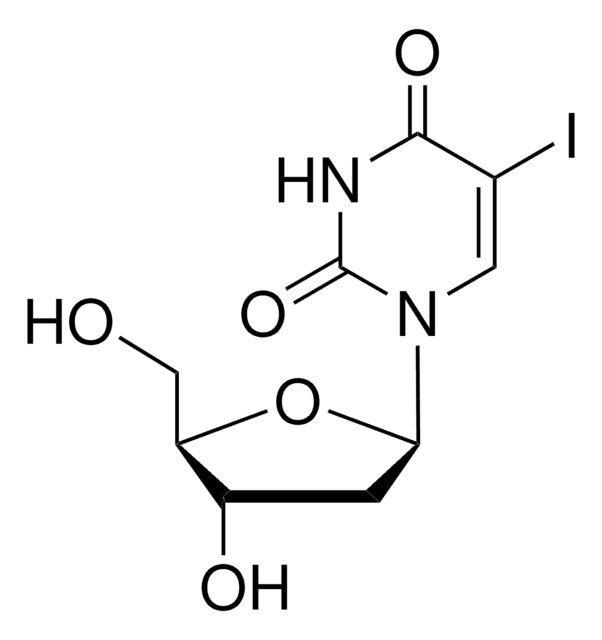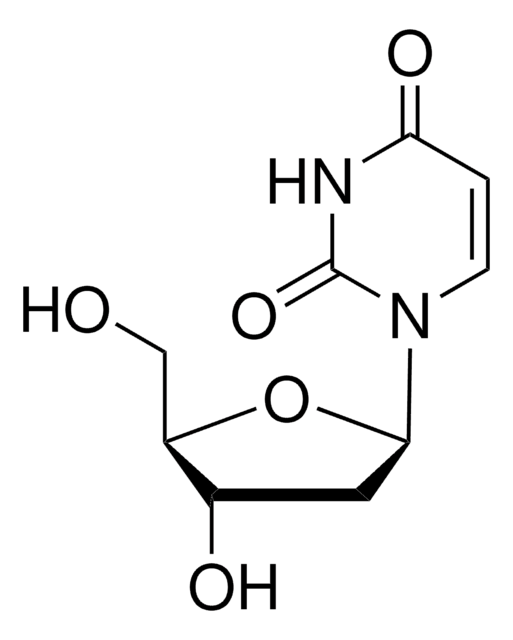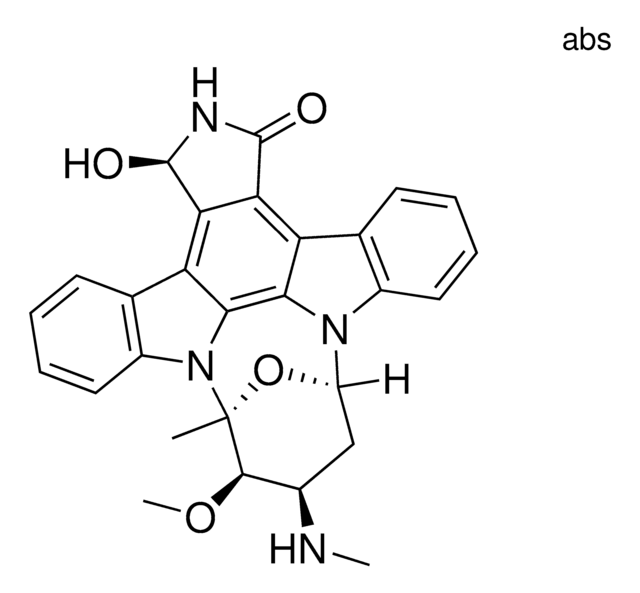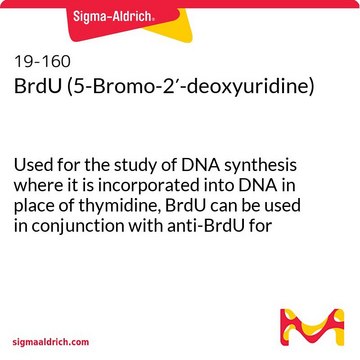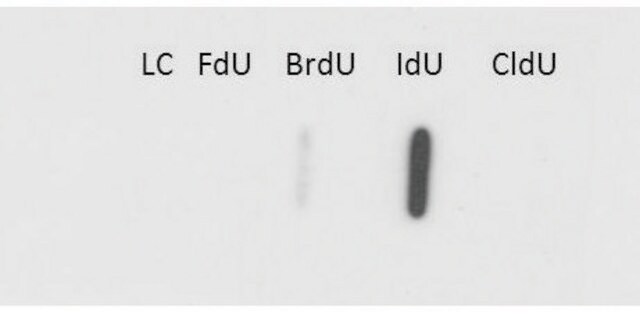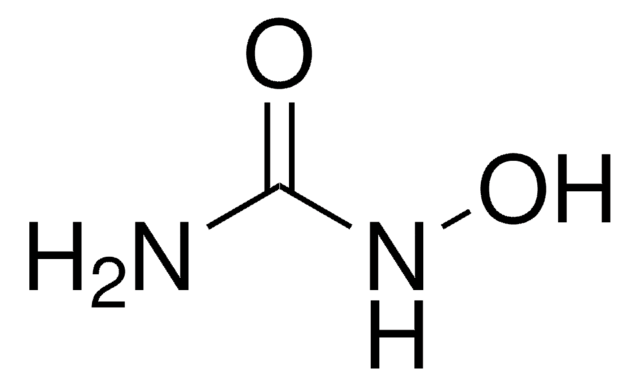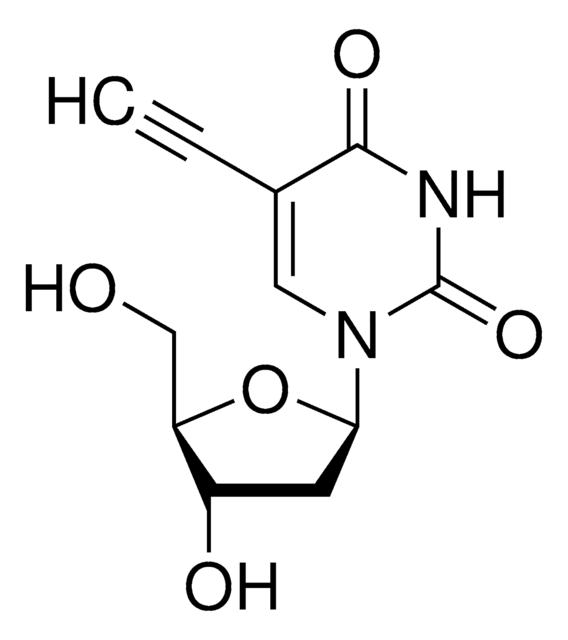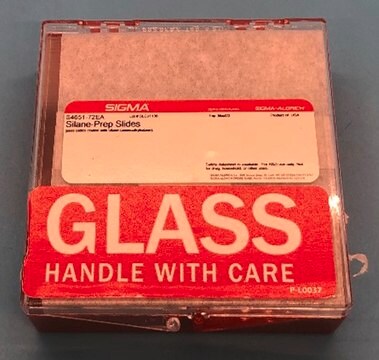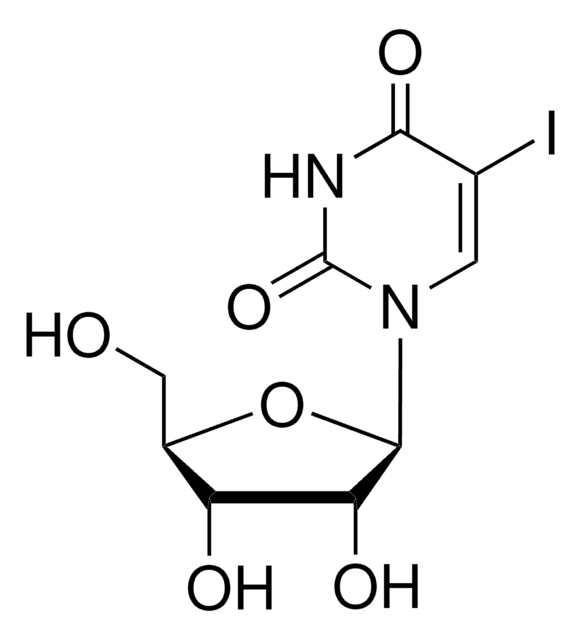C6891
5-Chloro-2′-deoxyuridine
thymidine analog
Sinónimos:
CldU
About This Item
Productos recomendados
Nivel de calidad
Ensayo
≥98% (HPLC)
Formulario
powder
solubilidad
1 M NH4OH: 20 mg/mL, clear, colorless to faintly yellow
temp. de almacenamiento
−20°C
cadena SMILES
OC[C@H]1O[C@H](C[C@@H]1O)N2C=C(Cl)C(=O)NC2=O
InChI
1S/C9H11ClN2O5/c10-4-2-12(9(16)11-8(4)15)7-1-5(14)6(3-13)17-7/h2,5-7,13-14H,1,3H2,(H,11,15,16)/t5-,6+,7+/m0/s1
Clave InChI
NJCXGFKPQSFZIB-RRKCRQDMSA-N
¿Está buscando productos similares? Visita Guía de comparación de productos
Aplicación
- study cell cycle dynamics by immunohistochemical analysis and double S-phase labeling using animal models
- analyze cell cycle length using an animal model
- label HEK293T cells for molecular combing assay
Acciones bioquímicas o fisiológicas
Palabra de señalización
Warning
Frases de peligro
Consejos de prudencia
Clasificaciones de peligro
Acute Tox. 4 Dermal - Acute Tox. 4 Inhalation - Acute Tox. 4 Oral - Carc. 2
Código de clase de almacenamiento
11 - Combustible Solids
Clase de riesgo para el agua (WGK)
WGK 3
Punto de inflamabilidad (°F)
Not applicable
Punto de inflamabilidad (°C)
Not applicable
Equipo de protección personal
dust mask type N95 (US), Eyeshields, Gloves
Elija entre una de las versiones más recientes:
¿Ya tiene este producto?
Encuentre la documentación para los productos que ha comprado recientemente en la Biblioteca de documentos.
Los clientes también vieron
Nuestro equipo de científicos tiene experiencia en todas las áreas de investigación: Ciencias de la vida, Ciencia de los materiales, Síntesis química, Cromatografía, Analítica y muchas otras.
Póngase en contacto con el Servicio técnico